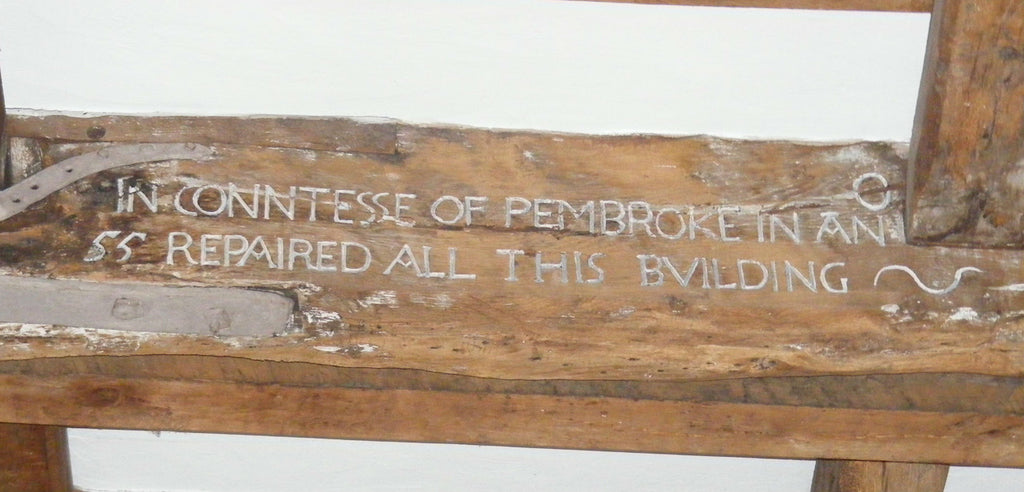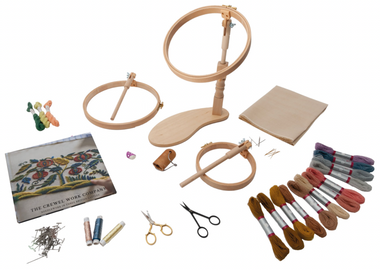Living within sight of Appleby Castle, my awareness of Lady Anne Clifford, its most famous incumbent, is a constant reminder of the past lives of our little town. I often look out over the valley from my front porch to the castle’s Norman Tower across the slate roofs and treetops, where the meandering river Eden curls around St Lawrence’s Church, the cricket pitch and, in the far distance, the high wall of the castle grounds. 
One theme that continues throughout her long life is her closeness to her mother, her two daughters, her granddaughters, and the Queen, and her disappointment in the lack of support from her father, her two husbands, and James I & VI.
My impression of Lady Anne is one of respect for a good, honest and determined woman, I am in awe that one person, one well educated and highly intelligent woman, could have such a lasting effect on our community, of her the close bond with and respect for her mother Lady Margaret, her longing for the company of her often absent father, the immense privilege and extravagance she witnessed as a child at the court of Queen Elizabeth I, her young adulthood again at court as a favourite of Queen Anne of Denmark, the change in circumstances on the death of her father when she was fifteen years old and ripe for marriage, her lonely marriages, and her spirit and determination.

For much of her life, Lady Anne fought a continuous legal battle over her father’s legacy concerning her right to inherit castles, farms, tenancies and a considerable amount of land across Yorkshire and Westmorland.
Appleby, Brougham, Brough, Pendragon and Skipton Castles had all belonged to her father, George Clifford, 3rd Earl of Cumberland. The Earl was one of Queen Elizabeth’s esteemed courtiers – rising to fame and favour thanks in some part to his skill as a jouster. Upon his death when Lady Anne was 15, possibly concerned that his wealth was insecure and that this would damage Anne’s marriage prospects, Lady Anne's father left his estates to his bother.

Lady Anne’s two brothers elder brothers had predeceased her by the time that her father wrote his will, but her father’s bequest was a direct breach of an entail which stated that the Clifford estates should descend lineally to the eldest heir, whether male or female, and this dated back to the time of King Edward II.
And so, a near 40-year legal dispute began, with Lady Anne sparring first with her uncle, and then her cousin, to reclaim her castles refusing to settle for anything less than her full inheritance.
Lady Anne’s determination for justice never wavered. She refused to withdraw even when she was offered financial compensation in lieu of actual bricks and mortar or when her uncle refused to hand over the Skipton as per the legal requirement in 1607. Both of her marriages failed in part due to her preoccupation with her legal wrangling. King James I and VI begged her to drop the case but Lady Anne refused, even risking the wrath of the king.

The view from the Norman Tower. St Lawrence’s Church, the town and our home is to the left of this picture.
Only in 1643, after her male cousin died leaving no heir, did Lady Anne regain the Clifford family's lands and the castles which stood on them. She had outlived the argument in her late middle age.
Returning to the North in 1649 when it was deemed safe enough for her to travel, Lady Anne found her inherited lands and castles in a poor state, having been destroyed variously at the hands of fire, abandonment and battles during the English Civil Wars.

Lady Anne Clifford, Countess of Dorset, Pembroke and Montgomery, by now in her 60th year, took control of her lands and embarked on restoring her properties. Despite Lady Anne being a devoted royalist, Oliver Cromwell allowed her to continue her repairs. He did not see her as any threat to his power as she was unlikely to raise an army against his rule.
Lady Anne’s restorations and building work also extended to benefit the communities around her various castles – for example with repairs to the many churches on her lands.

In St Lawrence’s Church, Appleby that Lady Anne was laid to rest after her death at Brougham Castle in 1676. Her wall of heraldry declares the lineage for her descendants to see, fitting for the last member of one of England’s great medieval dynasties. Her adored mother Lady Margaret’s beautiful effigy is placed within ten feet of Anne’s modest stone tomb.

You can read more here about Lady Anne's life.
Lady Anne’s Needlework Festival will take place in Appleby-in-Westmorland, Lady Anne's beloved home town, from 4th to 17th July 2021.





